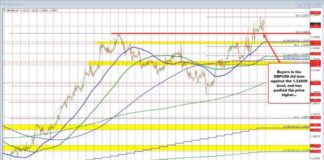The recent market analysis showed that the EUR/GBP spiked following the UK inflation numbers. However, despite the GBP weakness, the euro is not strong enough to capitalize on this situation. The UK yields dropped across the curve, with headline inflation remaining flat in month-to-month terms, marking the first time it fell below 2% since April 2021. It is expected that inflation will rise back above the BoE’s 2% target by the end of the year due to energy base effects.
Transport-related prices and services costs were the main negative contributors to the monthly inflation numbers. Core CPI slowed down, and services inflation also recorded a decline. The Bank of England is expected to take a more activist approach, similar to the ECB. The BoE has already initiated a rate cut and is likely to continue this trend in the future.
In the broader markets, trading in Europe and the US has been uneventful as investors await the ECB policy meetings and US economic data releases. Core bonds are gaining ground, with European stock markets failing to recover from previous setbacks. Brent crude prices are holding steady, and the EUR/USD exchange rate is stable.
According to the Economic Experts survey, inflation rates are expected to remain above central banks’ targets globally. Inflation expectations for the coming years vary across regions, with higher expectations in Eastern Europe, South America, and parts of Africa. The Czech National Bank recently cut its policy rate, with board member Holub advocating for a more significant reduction to support economic recovery.
Overall, the global economic outlook remains uncertain, with central banks closely monitoring inflation and economic indicators to make informed policy decisions. It is crucial for investors to stay informed about market developments and be prepared for potential changes in the financial landscape.

















